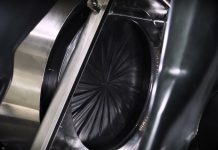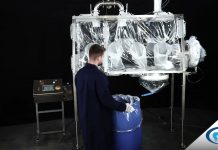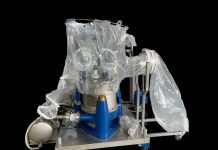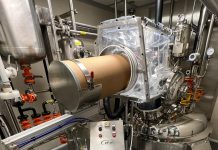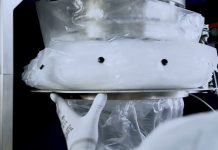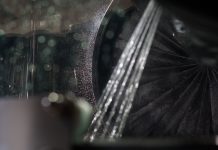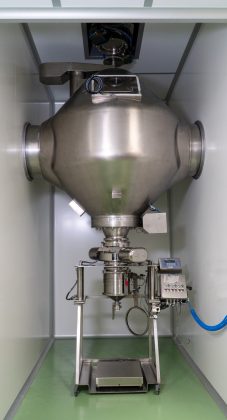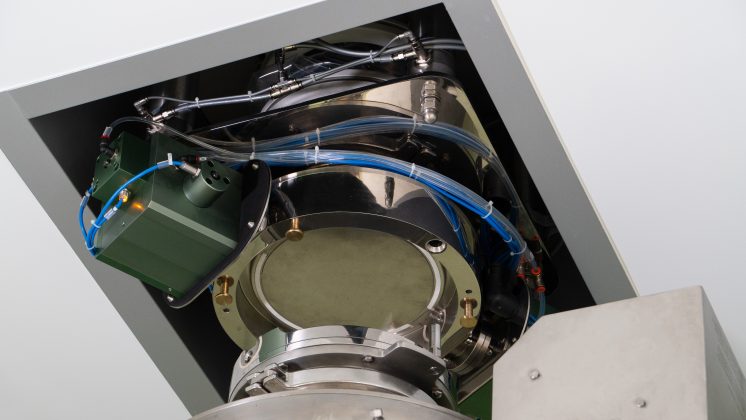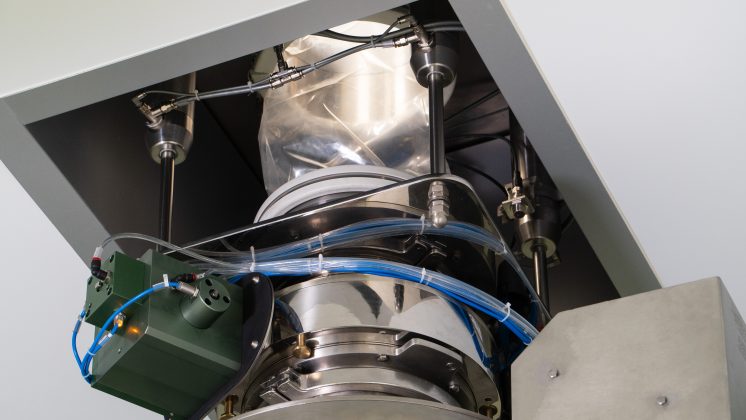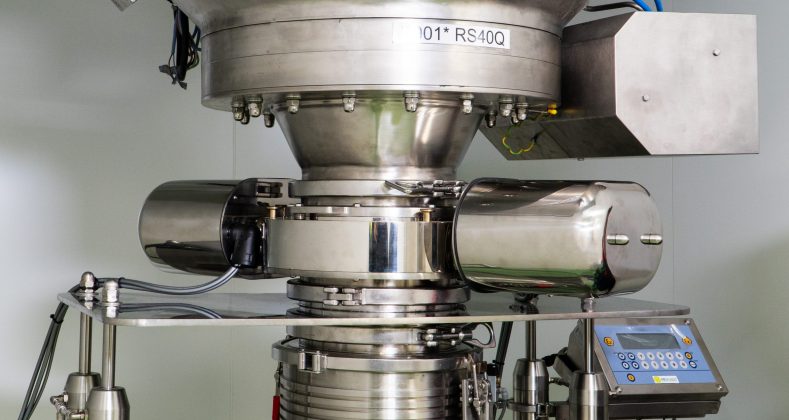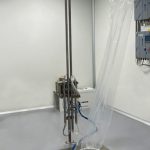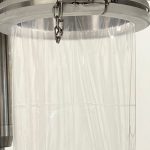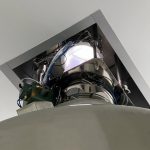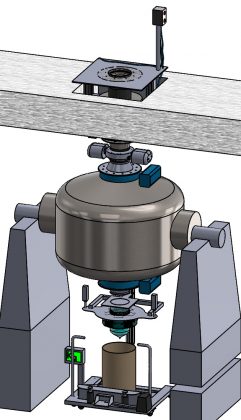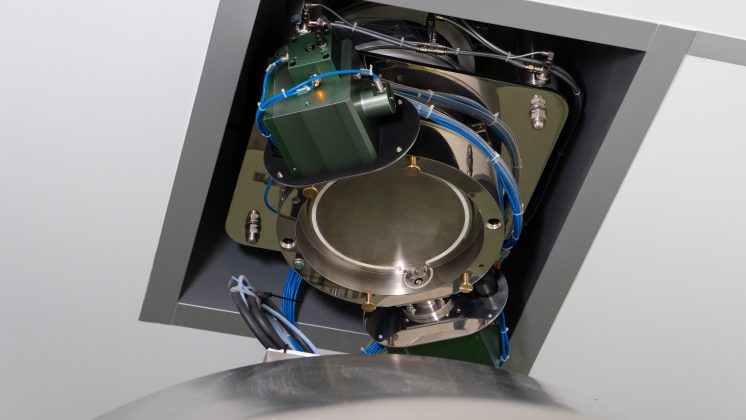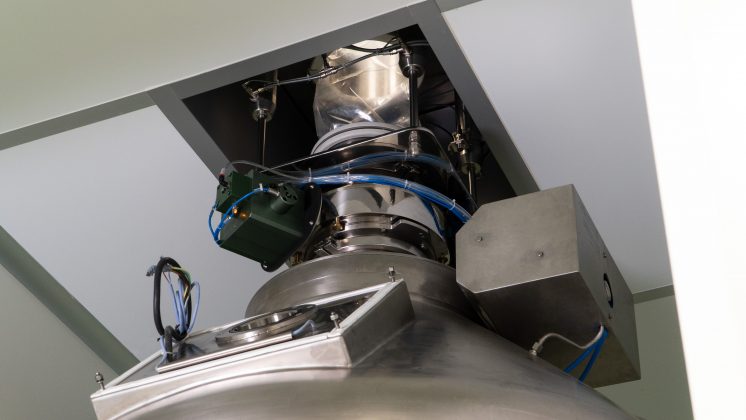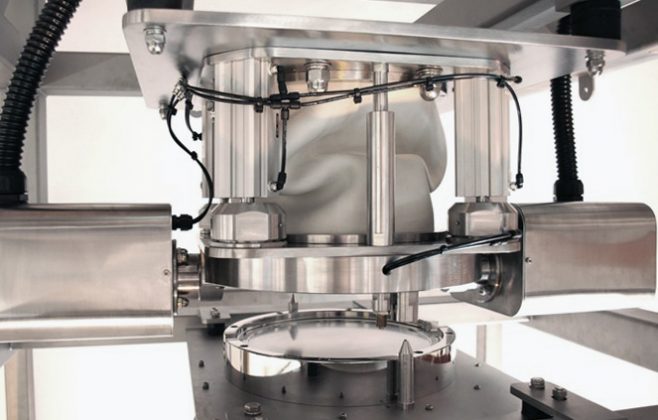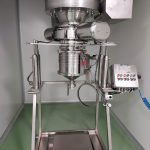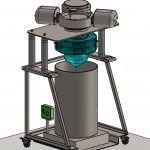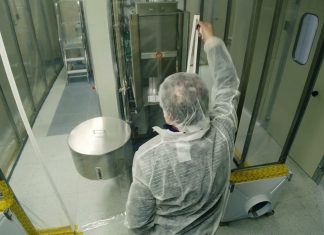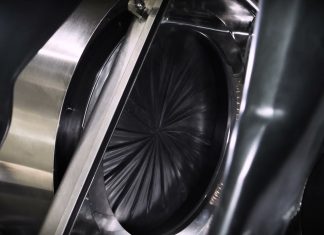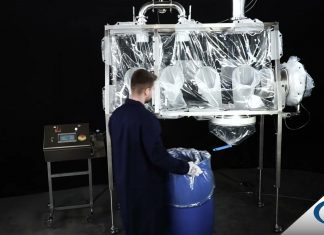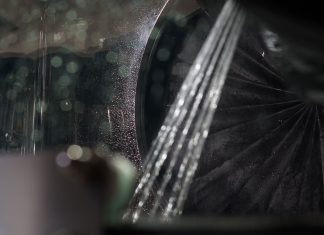Charging and discharging containment is a delicate phase for any kind of equipment, but it becomes even more so when the machine rotates on itself.
CSV Containment has designed and built a mobile, telescopic solution for charging and discharging containment that automatically couples with rotary dryers, even in environments that do not offer much manoeuvring space.
Ensuring a proper level of containment in a production process is often a challenge that requires flexibility and innovation. Two characteristics that are not lacking in CSV’s Containment team.
In this example, the powder transfer circuit starts two floors above the dryer. Indeed, the product is transferred from a horizontal axis centrifuge to the intermediate floor where, through a custom-made sleeve made by CSV Containment, the load is then moved to the dryer on the floor below. The flexible sleeve secured by steel clamps and dust collars transfers the powder to the active part of an automatic DN250 ChargePoint split valve.
The valve is mounted on an automatic telescopic assembly with four pneumatic steel pistons, allowing the structure to lengthen and shorten. The transfer sleeve made of dissipative, transparent, and flexible plastic film follows the movement of the assembly, stretching and retracting. The charging point of the rotary dryer is equipped with a passive split valve that allows the system coupling and decoupling when the two parts are aligned.
The split valve only opens if the passive and active sides are coupled and secured. Once the charging operation is completed, the valve closed, the parts separated, and the pistons retracted, the dryer is free to rotate.
Main characteristics of the coupling solutions of the charging point:
- Coupling with a high level of containment achieved through the DN250 ChargePoint valve that allows an OEB4 containment level.
- Automatic high-level coupling allows rotation of the dryer, which clearly cannot be constrained to a fixed load point.
- Electromechanical interlocks assure precision, reliability, and repetitiveness of the coupling, charging, and rotating operations.
- The polarity and alignment of the active and passive components of the split valve are ensured by mechanical locking and positioning systems.
- The telescopic unit disappears into the ceiling and therefore has no constraints on the walking level of the loading surface.
A mobile solution to easily couple the dryer discharging.
The coupling solution in the discharging point is the same as that adopted for the charging point: an active valve mounted on a telescopic and mobile cart antistatic braked and pivoting wheels. The cart is positioned and anchored under the rotary dryer to align its active valve with the passive valve of the dryer.
Main characteristics of the containment system for discharge in drums:
- Mobile cart made of AISI304 steel, equipped with antistatic and braked wheels and a platform with an ATEX scale and its display.
- Corrugated canister to host continuous liner.
- The assembly of the canister and the ChargePoint active split valve is equipped with a pneumatic telescopic mechanism to allow coupling with the passive side placed on the rotary dryer
- Steel ring in-built with the structure and fitted with an inflatable gasket, which acts as a bag tightener and supports the continuous liner package
All automations, including the scale, are connected via LAN to the distributed process control system communicating with the dryer.
CSV Containment provides tailor-made solutions for pharmaceutical and fine chemical sectors in terms of containment. For more info: containment@csv-ls.com



